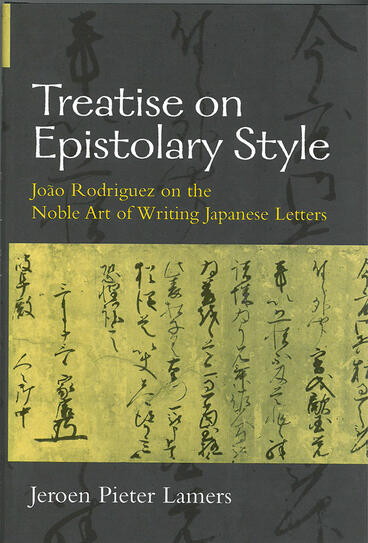Treatise on Epistolary Style
João Rodriguez on the Noble Art of Writing Japanese Letters
A treasure trove of diplomatics and epistolary stylistics from late 16th- and early 17th-century Japan
Description
Between 1604 and 1608, the Jesuit mission press in Nagasaki printed a comprehensive grammar of the Japanese language (Arte da lingoa de Iapam), written by the Portuguese Jesuit missionary João Rodriguez (1561–1633). The grammar provides a wealth of information about the Japanese language of the late 16th and early 17th centuries, and particularly the language of polite society. Rodriguez spent 33 years in Japan and was probably the European most proficient at speaking and reading the Japanese of his day.In taking up the topic of Japanese epistolary style, or sōrōbun, Rodriguez explains in his “Treatise on Epistolary Style” what kind of letters there are, their names, the set phrases that are used, how a letter is divided into its component parts, how to interpret the physical layout of a letter, and how the level of politeness can be determined. Rodriguez deals extensively with the courtesies for the Buddhist clergy, and he proposes an adaptation of these forms so that they can be used for and by Jesuit missionaries in Japan. Finally, Rodriguez provides a large number of sample letters.Treatise on Epistolary Style has a twofold utility for modern readers. First, it is an excellent instrument for dissecting Japanese letters from the early-modern era into their component parts. Second, it can help to make apparent the valuable historical and social clues that are often hidden in what appear to be trivial epistolary details. Once one understands the principles of early modern Japanese epistolary style, with its subtle social nuances and minute gradations of courtesies, one can glean much more information from early modern documents than their factual contents alone.
Jeroen Pieter Lamers studied at the Universities of Leiden, Cambridge, Coimbra, and Osaka. He received his PhD in 1998 from the University of Leiden and is Industrial Council to the Royal Netherlands Embassy in South Korea.

